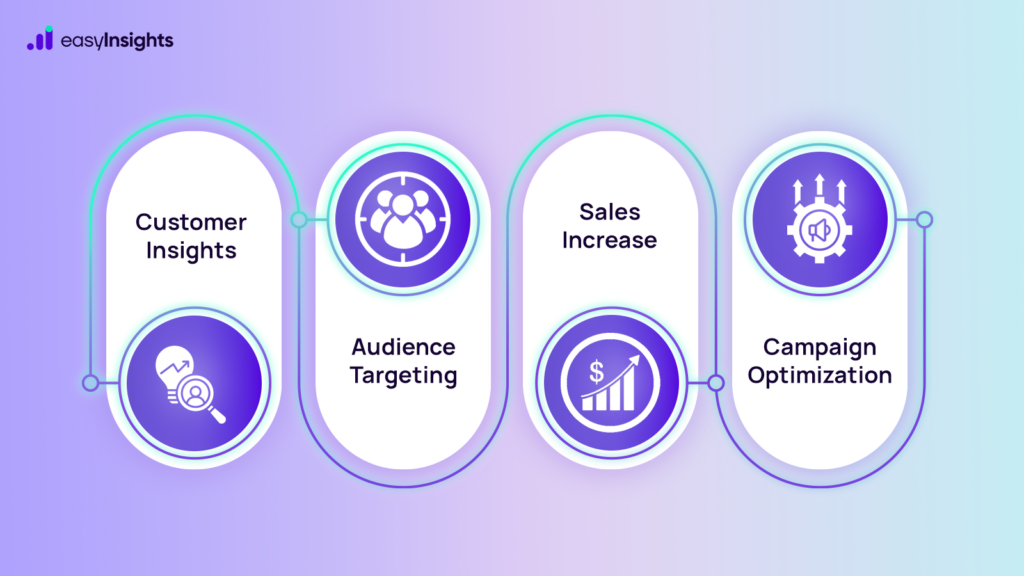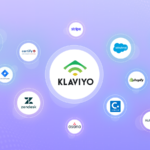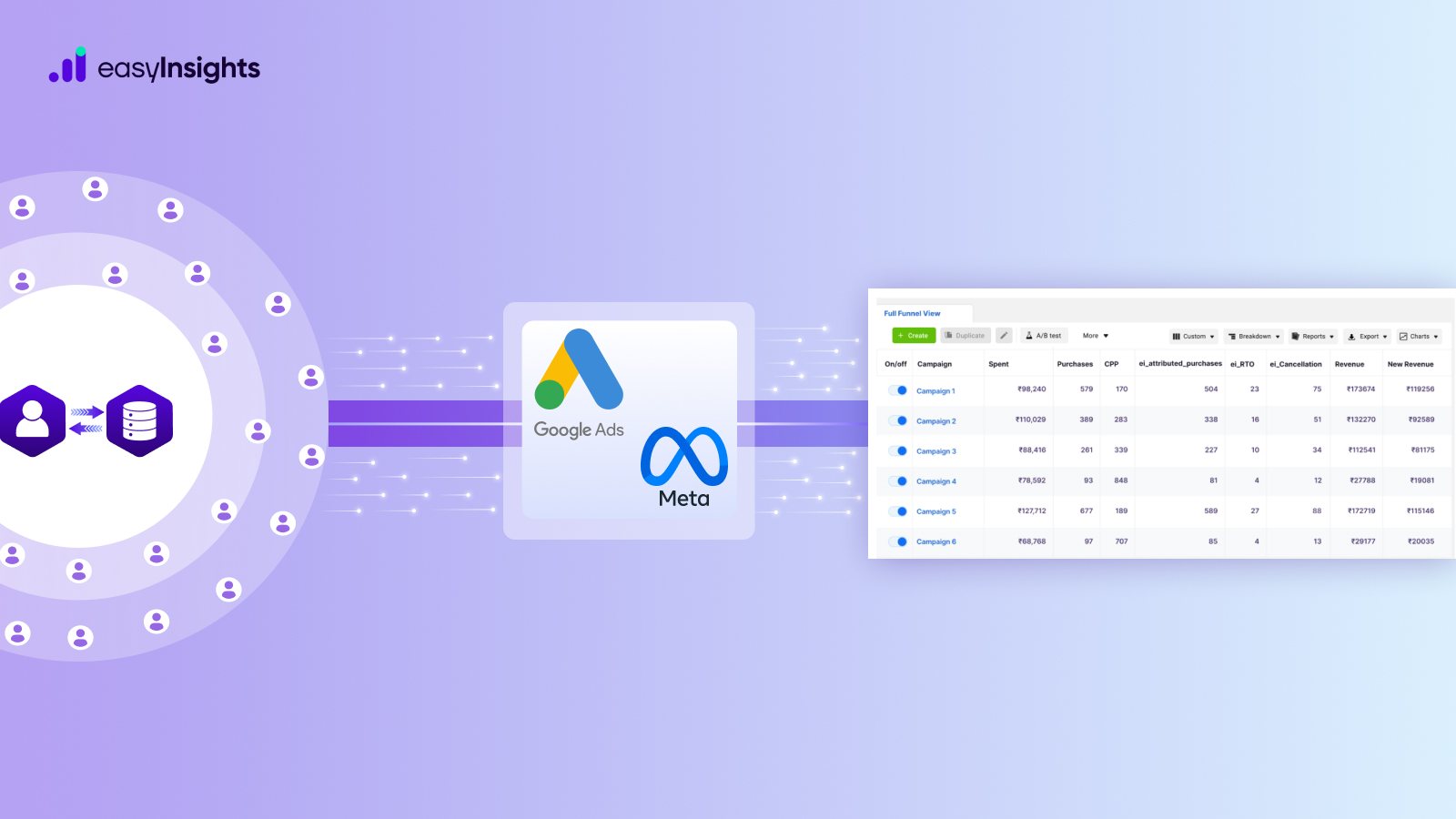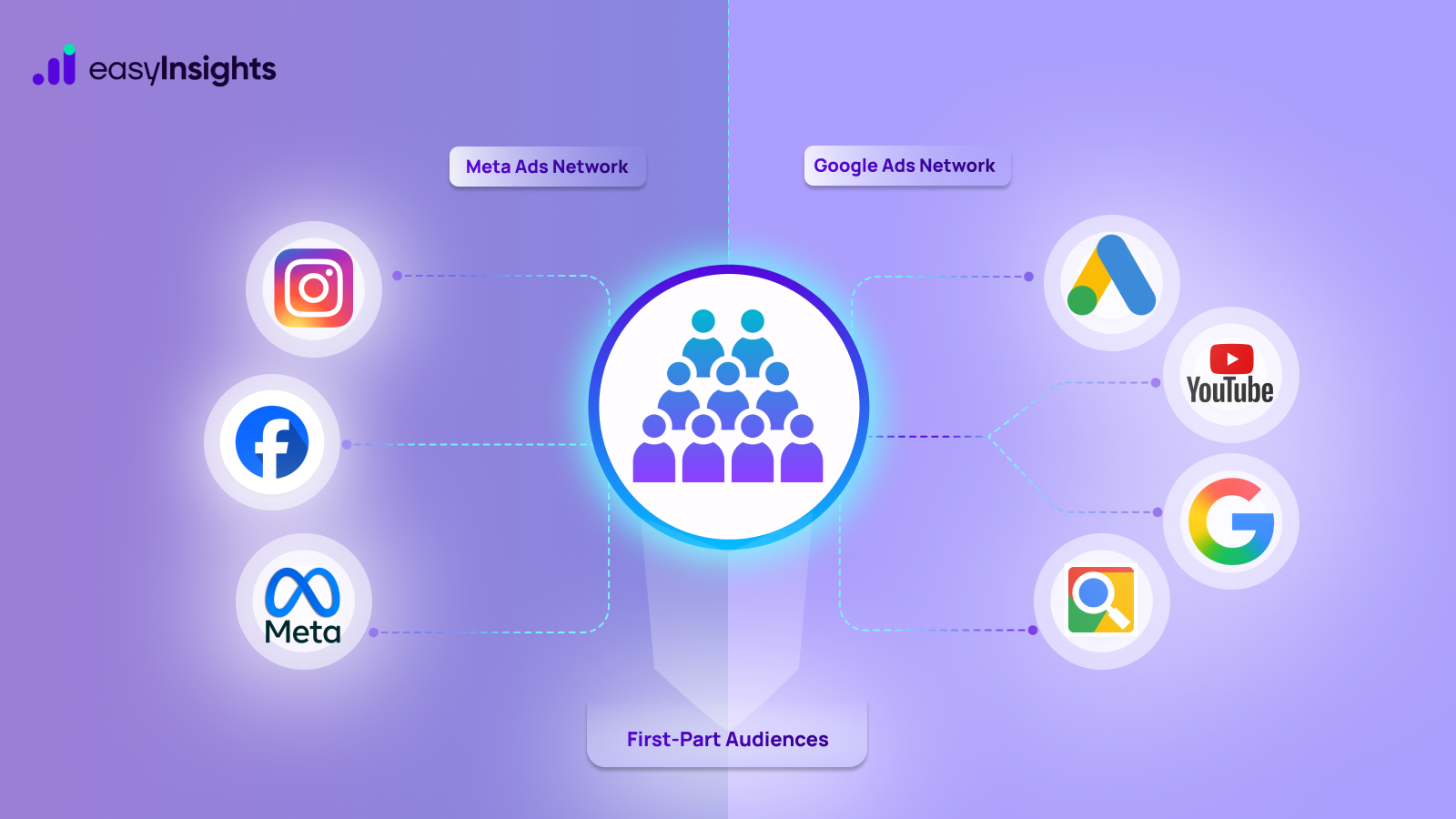
In today’s privacy-first world, where cookies are fading and data regulations are tightening, first-party data has emerged as the most reliable and powerful asset for digital marketers. Unlike third-party data, which is collected by outside platforms, first-party data is collected directly from your customers – through your website, app, CRM, or email interactions. This data is not only privacy-compliant but also highly accurate and personalized.
Let’s explore how to effectively use first-party data in digital marketing to boost performance, reduce costs, and drive meaningful results.
Jump ahead to:
What is First-Party Data
First-party data is user-level or event-level information that is collected, owned, and controlled directly by your business, without reliance on third-party intermediaries.
In digital marketing, this typically includes:
- Server-side tracked data: Events captured via your own servers (e.g., purchases, form submissions, logins), using tools like GTM server-side, API endpoints, or middleware like EasyInsights.ai
- CRM data: Lead, customer, and sales data collected from platforms like Salesforce, HubSpot, or Zoho.
- Offline conversion data: In-store purchases, call center interactions, or sales activity collected through internal systems and matched back to digital campaigns
- Authenticated user data: Email, phone number, or unique user ID collected via login, subscription, or account activity
This data is directly obtained from your audience and is stored within your own infrastructure (data warehouse, CDP, CRM), making it the most accurate and privacy-compliant foundation for marketing, measurement, and optimization.
Why First-Party Data Matters Now
With Chrome deprecating third-party cookies and platforms like iOS enforcing opt-in tracking, advertisers face a signal loss crisis. First-party data is the solution because it offers:
- Persistence: Data survives browser restrictions
- Compliance: Easier alignment with GDPR, CCPA, and DPDP (India)
- Accuracy: Collected from authenticated or high-intent users
- Better attribution: Enables full-funnel tracking including offline touchpoints
- Ad platform optimization: Feeds verified conversions to Meta, Google, etc.
First-Party Data in Digital Marketing
Here are ways to use first-party data in digital marketing workflows,
1. Server-Side Conversion API Integration
Server-side Conversion APIs allow you to send conversion events directly from your backend systems to ad platforms, ensuring higher data accuracy and reliability—especially in environments where browser-based tracking is limited due to ad blockers, privacy restrictions, or cookie limitations.
Use this data to:
- Track full-funnel actions such as qualified leads, approvals, and sales—not just surface-level events like form submissions.
- Improve event matching and attribution accuracy by including hashed user identifiers like email, phone number, or external IDs.
- Optimize campaigns for real business outcomes by sending backend-verified conversions directly to the ad platform.
- Enable value-based bidding by leveraging enriched event data from your CRM or backend systems.
- Close the attribution loop by syncing offline conversions (e.g., call center sales, in-store purchases) with your ad platforms.
- Provide ad platforms with clean, de-duplicated events that accurately reflect user journeys across devices.
2. Offline Conversion Uploads
In industries such as BFSI, real estate, and healthcare, a significant portion of conversions happen offline – in stores, via surveys, phone calls, or in-person interactions.
Uploading these offline events securely to ad platforms like Meta and Google Ads helps close the attribution loop and improve campaign performance.
How to use offline event data:
- Feed CRM-recorded offline sales back into Google Ads and Meta to help algorithms focus on leads that actually convert, driving higher quality traffic and better ROAS.
- Match offline events to digital touchpoints using UTM parameters, GCLIDs, or click IDs captured at the point of lead submission.
- Regularly sync offline conversions via APIs, cron jobs, or webhook triggers to keep your ad platforms updated with the latest results.
- Optimize campaigns based on high-quality, verified leads and sales generated offline, not just online form submissions.
3. GA4 Server-Side Event Enrichment
Enhance your Google Analytics 4 (GA4) reports by sending enriched, server-validated events that improve data accuracy and user tracking.
How to use server-side data with GA4:
- Send backend-validated conversions to ensure reported events reflect actual business outcomes.
- Include user ID stitching to connect user actions across multiple devices and sessions for a unified customer view.
- Capture detailed eCommerce events with revenue, transaction IDs, and product-level information for precise revenue tracking.
- Enrich GA4 data with offline and delayed conversions to get a full picture of the customer journey.
- Track transactions that occur after a delay or on a different device, enabling more accurate funnel attribution and better marketing insights within GA4.
4. Audience Building for Remarketing
Leverage CRM data and server-side user behavior to create highly targeted audiences for remarketing across platforms.
How to use first-party data for audience creation:
- Segment users by high lifetime value (LTV), repeat purchase behavior, or dormant status based on server-collected and CRM data.
- Sync these segmented audiences securely to Meta, Google Ads, and email marketing platforms using hashed personally identifiable information (PII) or unique user IDs.
- Continuously update these audiences with real-time or batch server-side data to maintain relevance and accuracy.
5. Predictive Modelling on First-Party Data
Leverage your data warehouse or Customer Data Platform (CDP) to build machine learning models that predict key customer behaviors and business outcomes.
How to use predictive models with first-party data:
- Develop models for churn prediction, purchase likelihood, and lifetime value (LTV) forecasting using enriched CRM and server-side data.
- Export predictive scores to ad platforms through offline conversion uploads or real-time API integrations.
- Use these insights to enable value-based bidding and prioritize high-potential leads or customers in your marketing campaigns.
6. Cross-Channel Attribution
Combine server logs, CRM records, and ad interaction data to build a comprehensive multi-touch attribution model tailored to your business.
How to use first-party data for attribution:
- Capture all UTM parameters and click IDs at user entry points to track campaign sources precisely.
- Match these digital identifiers with eventual offline or online sales using hashed emails, phone numbers, or unique user IDs.
- Apply data-driven attribution models to assign weighted credit across channels based on their true contribution to conversions.
Automate the Process with EasyInsights
EasyInsights.ai automates your entire first-party data activation workflow. With a simple integration (by placing a pixel on your website), it starts tracking user interactions server-side, bypassing browser limitations and ad blockers. It captures key actions like form fills, purchases, button clicks, and sends this data in real time to platforms like Meta and Google Ads, ensuring your ad platforms always have the freshest, most accurate signals.
Not just that, EasyInsights also pulls in data from your CRM, offline events, and eCommerce tools, automatically enriching and unifying it in one place. This enriched data is then fed into your campaigns to supercharge performance, helping you personalize ads, improve targeting, and get better ROAS without needing a team of engineers.
Conclusion
As digital marketing evolves in a privacy-first world, first-party data has become the most valuable tool in a marketer’s playbook. It’s accurate, compliant, and deeply tied to real customer behavior—making it essential for precise targeting, meaningful personalization, and full-funnel attribution.
But unlocking its full potential requires more than just collecting it, it needs to be activated smartly and seamlessly across platforms.
That’s where EasyInsights comes in.
By automating the entire first-party data activation process—from server-side tracking to CRM enrichment and real-time syncing with ad platforms—EasyInsights helps you turn raw data into actionable insights and better campaign results.
If you’re looking to future-proof your digital marketing and do more with your data, start with your own. And power it with EasyInsights.
Book a demo with EasyInsights today








